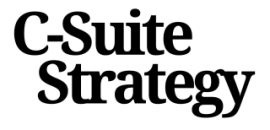
Understanding Portfolio Governance
Demystifying the Concept of Portfolio Governance
Portfolio governance serves as an essential cornerstone in the architecture of strategic business success. It's not merely a buzzword but a critical framework that empowers organizations to streamline project management and enhance overall portfolio performance. By understanding the intricacies of portfolio governance, senior leaders and c-suite executives can make informed decisions that align projects with their strategic goals. In essence, portfolio governance is the process of establishing clear roles and responsibilities within an organization to ensure effective decision-making. It involves strategic alignment of portfolio components with business objectives, helping to balance risks and optimize resource allocation. Organizations often grapple with complex portfolios, making it crucial to have a defined governance framework in place. This framework guides the governance team in managing portfolio components effectively and aligning them with strategic objectives. Portfolio managers play a pivotal role here, ensuring that decisions are not only efficient but also impactful on the business's long-term vision. The right governance model facilitates an environment where strategic objectives are consistently met. By incorporating a robust management plan, leaders can oversee every aspect of their portfolio, ensuring it aligns with the overall business strategy. This includes focusing on project governance, level of risk management, and ensuring the smooth navigation of processes that drive strategic initiatives forward. To delve deeper into this transformative approach, one can explore more about what it takes to implement effective portfolio governance on platforms that focus on strategic guides for the c-suite.Aligning Projects with Strategic Goals
Ensuring Every Project Aligns with Strategic Objectives
Aligning projects with an organization's strategic goals is essential for successful portfolio governance. To achieve this, businesses must first possess a clear understanding of their strategic objectives. This direction provides the foundation upon which projects are selected and prioritized.
The governance framework is crucial in guiding a portfolio toward strategic alignment. Within this framework, both the governance team and portfolio manager play pivotal roles and responsibilities in reviewing and approving projects. This ensures that only those initiatives that truly serve the organization’s broader goals are given the green light.
- Define Clear Strategic Goals: Setting specific, measurable strategic objectives serves as a roadmap for the governance portfolio.
- Implement Rigorous Selection Criteria: By establishing stringent criteria for project selection, businesses can ensure that every project within the project portfolio serves a strategic purpose.
- Foster Effective Decision Making: Decision-making processes need to incorporate input from diverse organizational roles to balance risks and opportunities effectively.
- Leverage Performance Metrics: Utilizing specific KPIs allows governance and management teams to measure portfolio performance against strategic targets.
Having a robust project governance process in place aids not only in selecting the right projects but also in continuously reviewing them to ensure they remain aligned with strategic objectives. By doing so, businesses can allocate resources more effectively, optimize performance, and ultimately, adapt to evolving market conditions with agility.
Resource Allocation and Optimization
Optimizing Resources for Strategic Advantage
Resource allocation and optimization remain pivotal in ensuring that your portfolio acts as a strategic asset, driving business transformation and growth. The governance team's role is to build and maintain a strong governance framework that seamlessly integrates with your organization's strategic objectives.
Effective resource allocation begins with thorough strategic alignment. Identifying priority projects and aligning them with strategic goals is crucial. This step ensures that resources flow towards projects that enhance the portfolio's overall impact and enable the organization to meet its high-level objectives. Remember, the synergy between project and business strategies is what amplifies performance.
To achieve optimal allocation, a nuanced understanding of current and future resource requirements is necessary. This involves assessing resource availability, skill sets, and potential constraints. A comprehensive management plan allows portfolio managers to allocate resources efficiently, minimizing risks and enhancing project outcomes. It also fosters an environment where governance and strategic decision making are intertwined, aligning roles and responsibilities with organizational imperatives.
Moreover, applying a dynamic approach in resource optimization helps in adapting to rapid changes in business environments. Incorporating risk management into resource decisions is essential, as it protects against unforeseen challenges and strengthens overall portfolio governance. As a result, your organization can navigate complexities with greater agility and ensure a robust portfolio performance over the long term.
To excel, emphasize continuous communication within your team. Establish clear processes for feedback and ensure a transparent environment where everyone can contribute to decision making. As highlighted in the article on embracing transparency, an open approach can further solidify your governance framework, making the entire organization more resilient and sustainably successful.
Risk Management in Portfolio Governance
Mitigating Risks with Strategic Governance
Effectively managing risks is a critical component of successful portfolio governance. While aligning projects with strategic goals ensures long-term benefits, it's vital to address uncertainties that can derail these objectives. A strategic approach to risk management ensures the organization’s resources are optimally utilized, safeguarding both performance and investments. Developing a robust governance framework to identify and mitigate risks involves a clear delegation of roles and responsibilities. Each segment of the portfolio should be evaluated for inherent risks, and a clear management plan should be established. This involves:- Establishing clear, quantifiable risk indicators to measure potential impacts on the portfolio components.
- Ensuring a thorough understanding of the business context and environment, allowing for informed decision-making.
- Engaging a governance team to supervise the ongoing risk assessment and identifying new emerging risks.
Performance Measurement and KPIs
Evaluating Outcomes and Setting Benchmarks
In the realm of portfolio governance, the measurement of performance plays a pivotal role in guiding strategic direction. Businesses today operate in an ever-evolving landscape, making it essential for the governance framework to incorporate robust performance measurement methodologies. This ensures that the organization remains aligned with strategic objectives.
Determining the right Key Performance Indicators (KPIs) involves more than merely choosing a set of metrics; it requires an understanding of which indicators will truly reflect your portfolio's success in meeting strategic goals. The right KPIs provide clarity on how well you're achieving strategic alignment across various portfolio components.
- Clearly define objectives for each project and align them with strategic goals to track real progress.
- Incorporate both qualitative and quantitative KPIs to gain a comprehensive view.
Moreover, the governance team must engage in consistent review processes to interpret these KPIs. This often involves utilizing Portfolio Performance Management (PPM) tools to monitor, analyze, and report data, enabling effective decision making. It's equally vital that these processes are transparent and that the roles and responsibilities for these tasks are well-defined, fostering a sense of trust and accountability within the governance project.
In addition to performance measurement, embedding a culture of continuous feedback and learning is crucial. Teams should not only address the "what" but also unravel the "why" behind performance outcomes. Such introspection often reveals underlying risks or bottlenecks in the project management cycle that can be managed proactively, enhancing the overall governance portfolio.
Continuous Improvement and Adaptation
Adapting Through Continuous Improvement
In the ever-evolving landscape of business strategy, continuous improvement is not just a buzzword but a necessity. The portfolio governance framework must remain agile to effectively support the strategic objectives of an organization. This means consistently refining processes, optimizing resource allocation, and closely aligning projects with the overarching business goals.
One of the critical roles of a portfolio manager is to facilitate a culture of ongoing learning and development. By actively engaging governance teams and project managers in regular review sessions, businesses can assess current performance metrics and identify areas for improvement. Feedback loops should be established to ensure that every insight gained from the analysis informs future decision making. This approach not only enhances transparency but also positions the organization to tackle emerging risks proactively.
As changes occur within the portfolio components, it's essential for leadership to make informed decisions regarding resource redistribution and strategic shifts. This dynamic decision making ensures that the portfolio management processes remain relevant and focused on actualizing the organization's strategic goals. Implementing a robust risk management strategy is equally important. By embedding risk assessment into the continuous improvement cycle, companies can mitigate potential pitfalls before they escalate.
Moreover, incorporating technology and innovation into your management plan can significantly enhance portfolio performance. Advanced project management tools can streamline communication among team members, automate routine tasks, and provide real-time insights that bolster governance frameworks. By keeping the lines of communication open and roles and responsibilities clear, the organization can thrive amid change.
Ultimately, continuous improvement in portfolio governance is about maintaining a delicate balance between stability and adaptability. By fostering an environment where strategic alignment is a shared priority across all levels, leaders can ensure that their organization not only meets its current objectives but is also prepared for future challenges.














